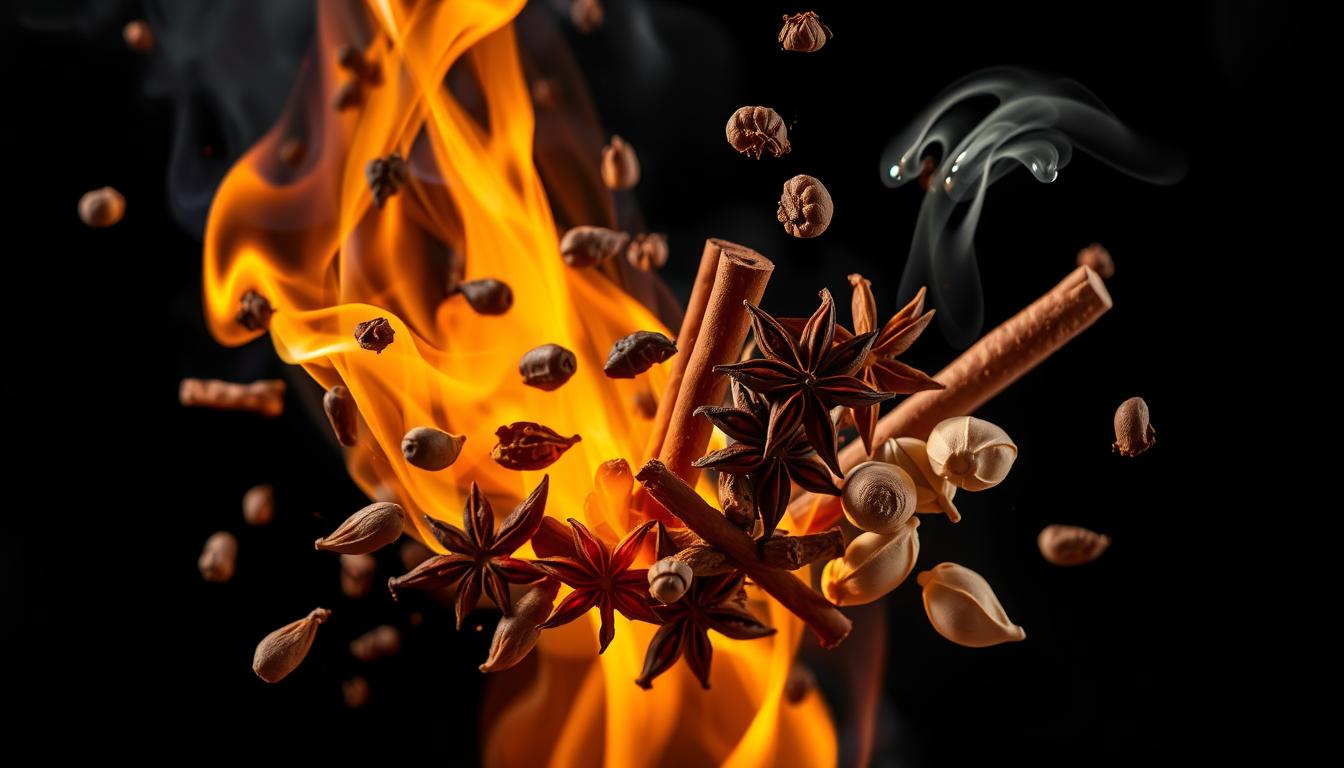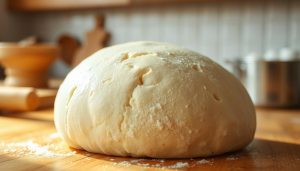Did you know that 75% of people mistake the burning sensation in spicy food for actual heat? In reality, capsaicin—the compound in chili peppers—tricks your brain into feeling warmth without raising your body temperature. This fascinating interplay between thermal energy and flavor defines how ingredients transform in your kitchen.
Applying heat to seasonings unlocks hidden layers of taste. Gentle warming releases aromatic oils in cumin or coriander, while high temperatures caramelize sugars in paprika. Your body responds uniquely: capsaicin activates pain receptors, creating that fiery kick, while cinnamon’s warmth triggers temperature-sensitive neurons.
Mastering these reactions elevates everyday cooking. For example, toasting whole spices briefly maximizes their flavor potential. Overheating, however, can destroy delicate compounds. The key lies in balancing time and temperature to amplify—not diminish—your dish’s character.
Key Takeaways
- Heat alters spice chemistry, releasing oils that define flavor profiles
- Different temperatures activate unique sensory responses in your body
- Capsaicin creates perceived heat without physical temperature changes
- Proper application enhances dishes; excessive heat destroys flavors
- Toasting techniques optimize spice performance in recipes
The Science Behind Spices and Heat
Your mouth’s fiery response to chili peppers isn’t about actual temperature. Capsaicin—the compound in these pepper varieties—hijacks your pain receptors, creating a phantom burn. This biological trickery explains why some foods feel scalding even at room temperature.

When Peppers Talk, Nerves Listen
Capsaicin binds to TRPV1 receptors designed to detect real heat threats. Your body responds identically to both physical burns and chili pepper exposure. This triggers sweating and flushing—your natural cooling mechanisms.
The Scoville Scale quantifies this effect scientifically. Consider these comparisons:
| Pepper Variety | Scoville Units | Comparable Heat Source |
|---|---|---|
| Bell Pepper | 0 SHU | Room temperature water |
| Jalapeño | 2,500-8,000 SHU | Hot coffee |
| Carolina Reaper | 1,400,000-2,200,000 SHU | Industrial steam |
Flavor Alchemy Through Chemistry
Heat transforms foods beyond capsaicin activation. Volatile compounds in spices release aromatic molecules when warmed. Your brain combines these scents with taste signals to create complex flavor perceptions.
This explains why toasted cumin smells earthier than raw seeds. Nearly 40% of people report enhanced enjoyment of heated spices compared to uncooked versions. The endorphin rush from capsaicin exposure amplifies this pleasure response.
How Spices React to Heat: Distinguishing Heat and Spice
Many assume “hot” foods only deliver fiery sensations. In truth, heat and spice operate through separate mechanisms. Thermal energy from cooking affects taste receptors differently than capsaicin’s chemical burn. This distinction lets you craft dishes with bold flavors that won’t overwhelm sensitive palates.

Managing Heat Levels in Your Dishes
Control fiery elements without sacrificing flavor complexity. Remove chili seeds to reduce capsaicin intensity while retaining aromatic depth. Dairy products like yogurt neutralize heat chemically—a trick used in traditional cuisine. For example:
| Technique | Heat Reduction | Flavor Preservation |
|---|---|---|
| Seed Removal | 40-60% | High |
| Dairy Additions | 70-80% | Medium |
| Spice Layering | Customizable | Maximum |
Clearing Up Common Culinary Misconceptions
Not all spicy dishes scorch your tongue. Chicken Tikka Masala demonstrates how warm spices like cardamom create richness without capsaicin overload. Chef Hari Nayak notes: “Modern diners seek flavor adventures, not just heat endurance tests.”
Indian food offers numerous examples of low-heat, high-spice meals. Over 60% of its regional specialties use aromatic blends rather than chili dominance. Adjusting pepper quantities lets you maintain authentic profiles while accommodating diverse preferences.
Practical Tips for Cooking with Bold Flavors
Summer’s vibrant produce demands spices that enhance without overpowering. Selecting the right peppers and mastering application techniques lets you create balanced dishes that celebrate seasonal ingredients.
Seasonal Spice Selections and Their Uses
Match pepper intensity to your cooking method using this heat guide:
| Pepper | Heat Level (SHU) | Best Uses |
|---|---|---|
| Paprika | 200-500 | Meat rubs, smoky sauces |
| Jalapeño | 2,500-5,000 | Fresh salsas, garnishes |
| Chipotle | 5,000-10,000 | Marinades, BBQ chicken |
| Habanero | 100,000-350,000 | Hot sauces, infused oils |
Creative Applications: Rubs, Sauces, and Marinades
Transform basic ingredients with these techniques:
- Combine cayenne with garlic and cumin for dry rubs that stick to meats
- Blend roasted peppers with vinegar for hot sauce variations
- Mix chipotle powder into yogurt marinades for grilled vegetables
Prep spice blends early in the day to let flavors meld. For intense heat, ghost pepper oil adds fiery depth to any dish without altering texture. Balance fiery elements with cooling agents like lime or avocado when serving.
Conclusion
Your understanding of spice chemistry changes everything. You now hold the keys to unlocking flavors through precise heat management. This knowledge transforms ordinary meals into restaurant-worthy experiences.
Apply these principles to balance dishes perfectly. Whether crafting family dinners or developing wholesale recipes, temperature control ensures optimal flavor release. Your ability to distinguish physical warmth from capsaicin’s burn makes you a smarter shopper and cook.
Continue experimenting with chili peppers and aromatic blends. Track results in a blog or cooking journal. Each culinary experiment deepens your mastery of food science.
Remember: Great cooking thrives on informed choices. Use your knowledge to create dishes that delight diverse palates. The journey through spice dynamics never truly ends—every meal offers new opportunities for discovery.



